When will protection against drones become standard?
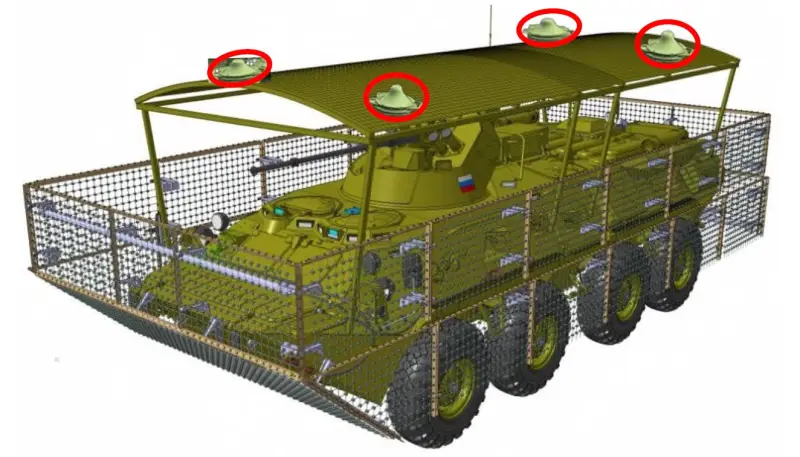
Source: Guidelines for ensuring protection of armored personnel carriers from FPVdrones (basic provisions), Moscow, GABTU, 2023.
Nets and visors
The simplest logic suggests the following chain of events. The enemy has significantly expanded the range of weapons used drones and is ready to hunt individual fighters, not to mention military equipment. Reports from the front show how sad the fate of the Loaf crew could be after the arrival of the only FPV. And vans from Ulyanovsk are far from the only victims of drone killers. Realizing the less than stellar effectiveness of cumulative anti-tank grenades suspended under the propellers of drones, neo-Nazis began to use specific fragmentation ammunition, significantly increasing their lethal force.
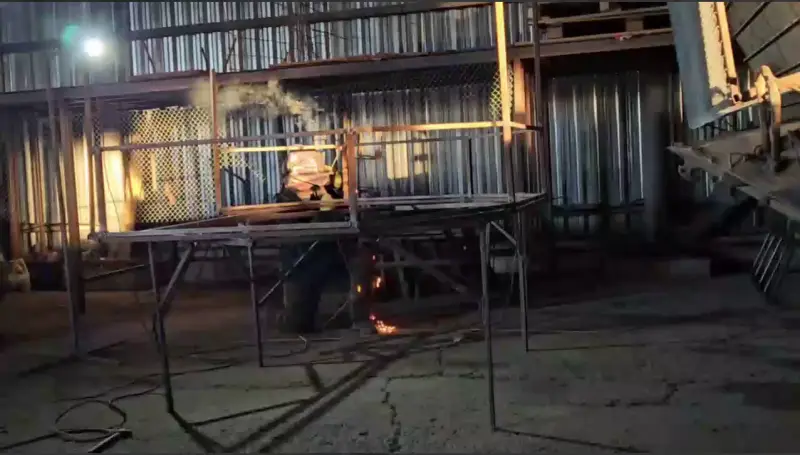
A typical front-line workshop where nets and canopies from drones are built.
In response to such challenges, Russian craftsmen began to build various types of structures designed to prevent ammunition from hitting the target. Grilles, visors, spaced armor and other shielding are used. Some of these barriers act as platoon screens, some simply do not allow a grenade to be dropped into an open hatch, and some structures are platforms for dynamic protection units. The technical creativity of the rembats does not always really help, but it definitely has a psychological effect on the crews.
Subsequently, the findings of the “field design bureaus” undergo appropriate testing at the training grounds of the GABTU of the Ministry of Defense of the Russian Federation and, with appropriate modifications, are accepted for service. The last sentence should have been a logical continuation stories, but it is missing. The thesis that every vehicle at the front should have bars and/or platoon screens has never found understanding in the military-industrial complex.
It is impossible to retrofit new or factory-restored self-propelled vehicles in front-line conditions for several reasons.
The first is that it distracts personnel from restoring damaged vehicles.
The second reason is that it creates a completely unnecessary accumulation of equipment, which can attract the attention of the enemy. Even in the deep rear. If neo-Nazis are ready to spend expensive HIMARS on several drone operators, then the newly arrived machines will be hit even more so.
The third reason is that the retrofitting of anti-drone nets, for example, on KamAZ and Uralov vehicles, delays trucks for the front.
The fourth reason is that, whatever one may say, it is easier to make a high-quality and durable canopy with a grille in the factory than in a rembat.
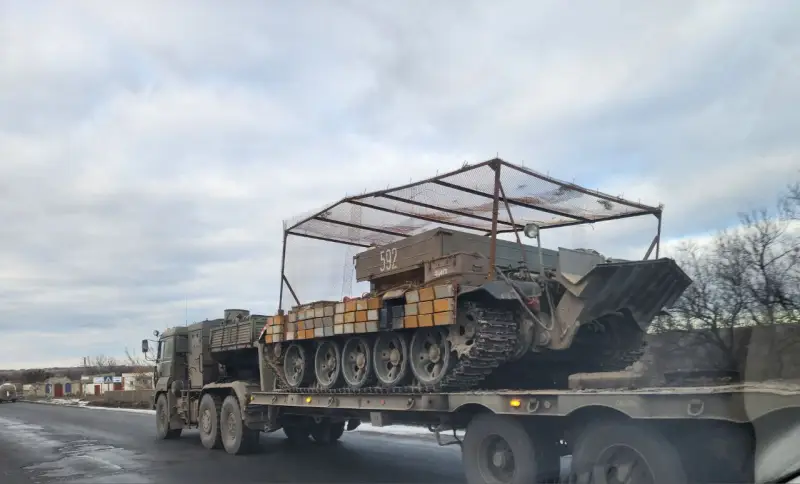
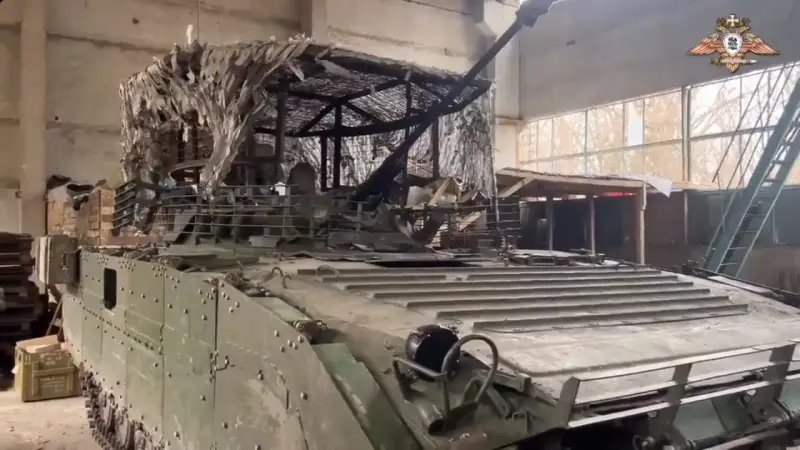
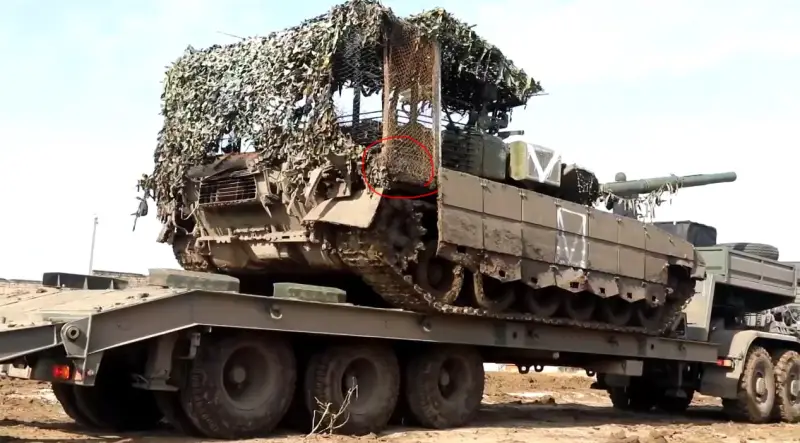
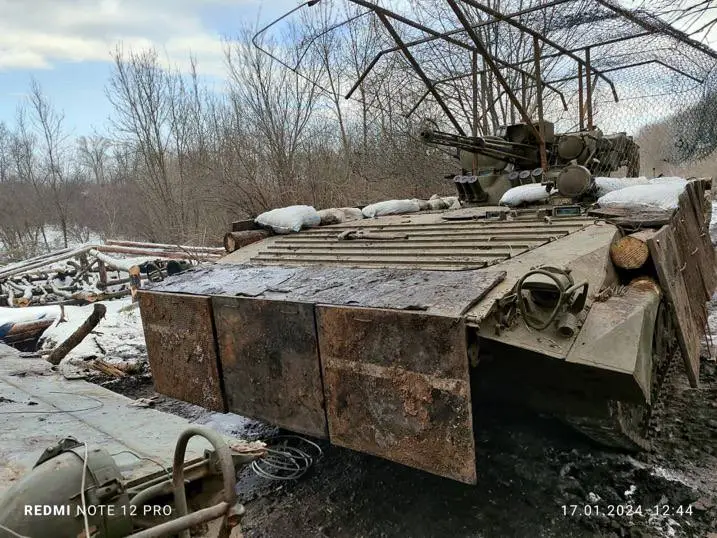
Some of the many examples of retrofitting military equipment in front-line conditions.
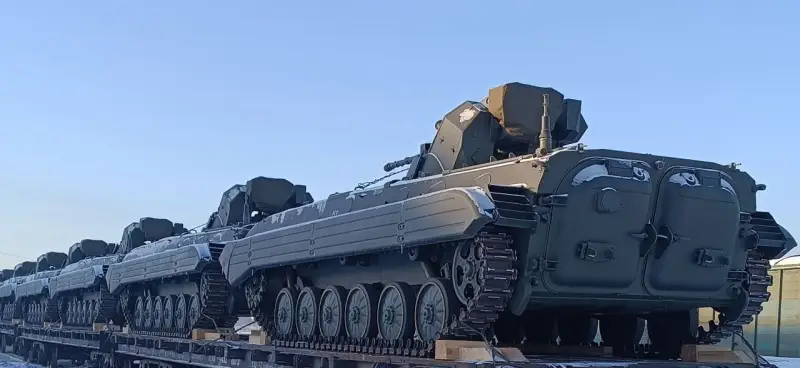

In this form, the restored equipment goes to the front. An easy target for drones of various stripes.
It would be a mistake to consider the installation of electronic suppression systems, such as the LGSh-608 and LGSh-609 noise generator, on front-line equipment as a panacea. Or the Volnorez UAV suppression complexes. The technology is necessary and useful, but it operates in a strictly defined frequency range, which does not always coincide with those of drones.
The operation of a 300-watt noise generator is a fairly serious marker for enemy electronic reconnaissance. Despite the fact that no effective means of combating drones has been found, gratings with other shielding are one of the simplest and cheapest possible. Only now the SVO soldiers have to develop and install protection on their own.
Proposal to GABTU
An interesting series of methodological recommendations on ensuring the protection of equipment from FPV drones has appeared on the Internet, including in the enemy sector. Authorship is indicated by the State Academic Technical University of the Russian Ministry of Defense. The enemy has already become familiar with these manuals, so they do not represent military secrets.
Manuals were issued separately for military vehicles, armored personnel carriers, infantry fighting vehicles with infantry fighting vehicles and, of course, for tanks. To be fair, it is worth noting that the military-industrial complex still bothered to equip tanks and infantry fighting vehicles at the factory with standard anti-drone arrays. But not always and not everywhere.
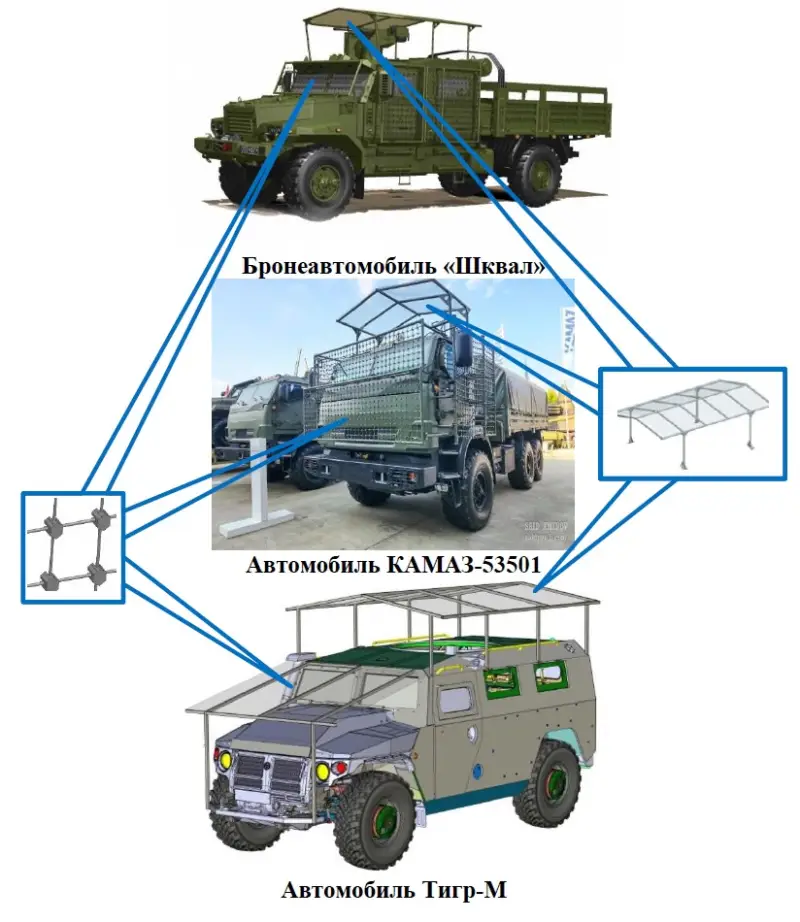
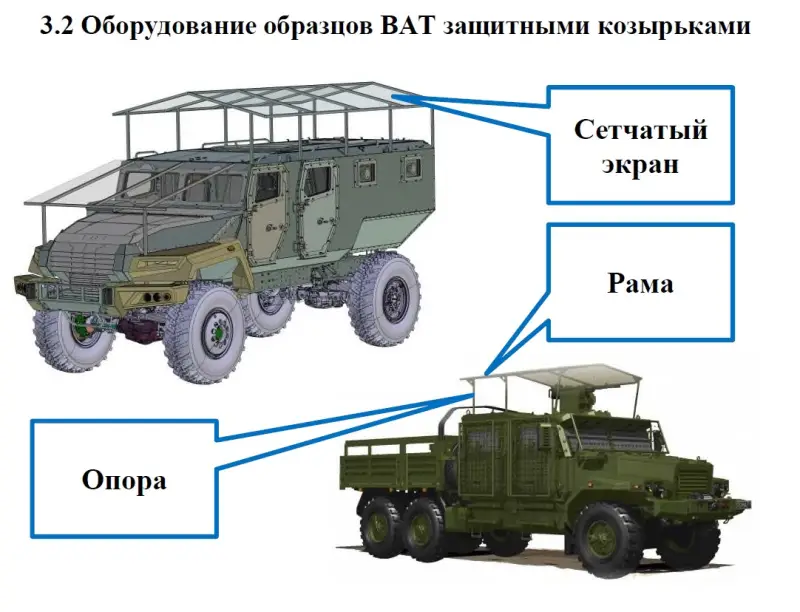
Source: Guidelines for ensuring the protection of airborne vehicles from FPV drones (main provisions), Moscow, GABTU, 2023.
Therefore, GABTU proposes to bring the equipment into combat order already at the front.
The manuals rightly indicate that “during combat operations of the Ukrainian Armed Forces, FPV drones, including retrofitted models for commercial purposes, are widely used to destroy military vehicles (as well as armored personnel carriers, infantry fighting vehicles, infantry fighting vehicles and tanks). Small size, high accuracy and the use of a wide range of weapons make FPV drones an effective means of destroying equipment.”
What needs to be done to protect against “birds”?
In addition to electronic warfare systems, it is necessary to cover the equipment with nets and bars. Let's look at the example of protection with nets from all angles except the roof.
The minimum kit for equipping one vehicle the size of a KamAZ consists of a profile with a cross-section of 30x30 mm or a pipe with a diameter of 30 mm - from 35 to 48 linear meters; grids (cell size not less than 75 x 75, but not more than 80 x 80); aramid cord (textile) with a diameter of 3–5 mm – from 15 to 20 m2 and M12 nut-bolt. The master also needs a welding machine, a grinder, three kilograms of 3 mm electrodes and a drill with drill bits. Don't forget to mention six cutting discs.
Approximately the same amount of resources is required to place protective visors on the car. The gold standard is considered to be 200 mm gaps between the body and the side mesh, as well as placement of the visors at a height of at least 1,1 meters. The canopy must be gable with a plane slope of 15–25 degrees.
GABTU also offers weaving protective nets in front-line conditions. The manual says:
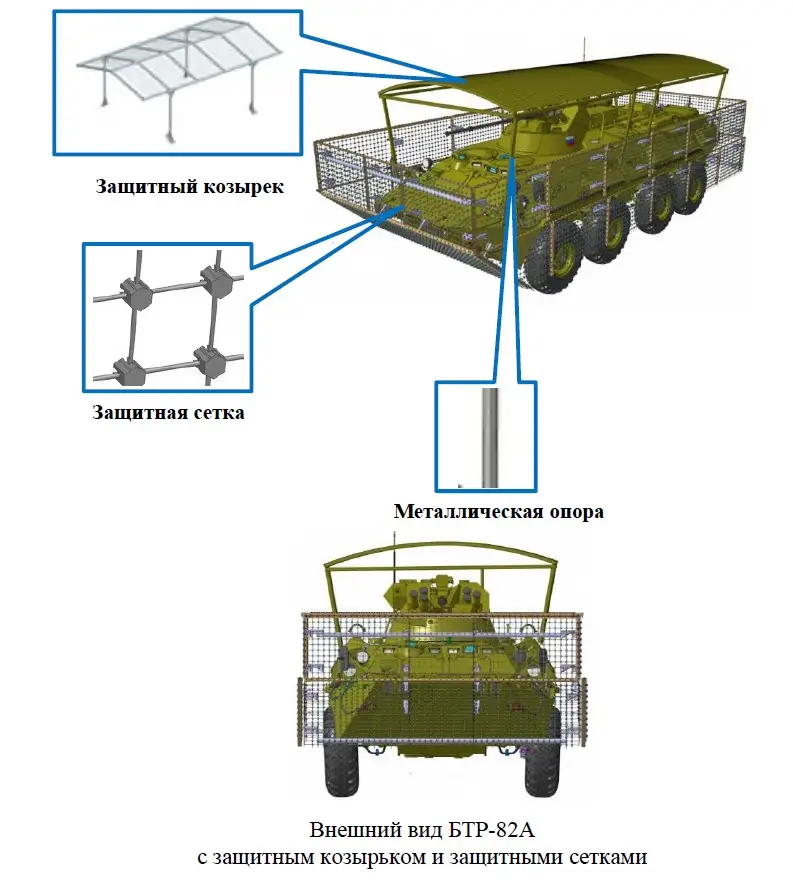
Source: Guidelines for ensuring the protection of armored personnel carriers from FPV drones (main provisions), Moscow, GABTU, 2023.
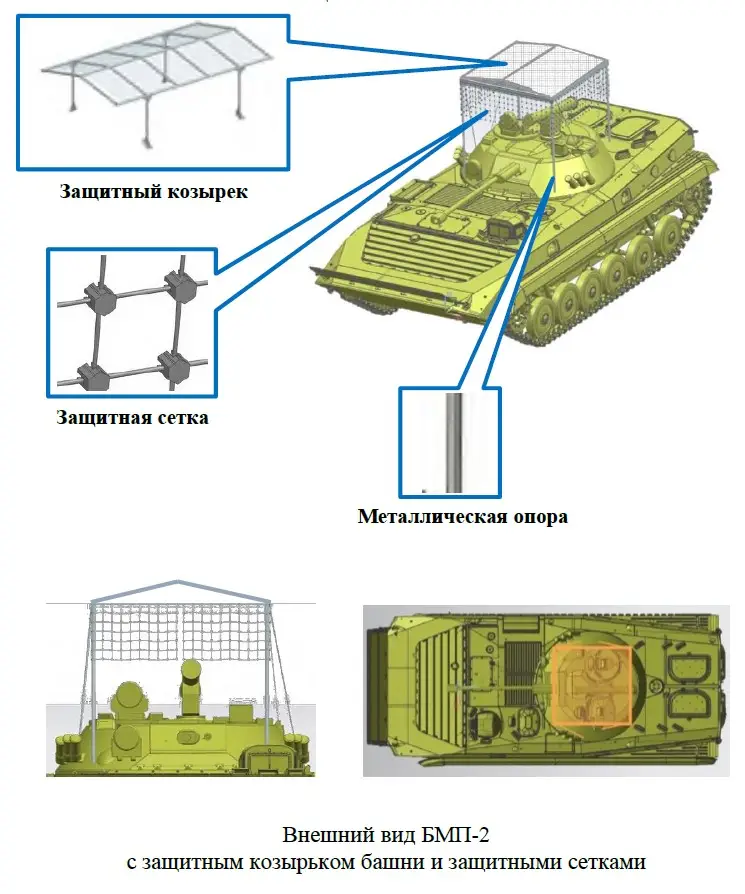
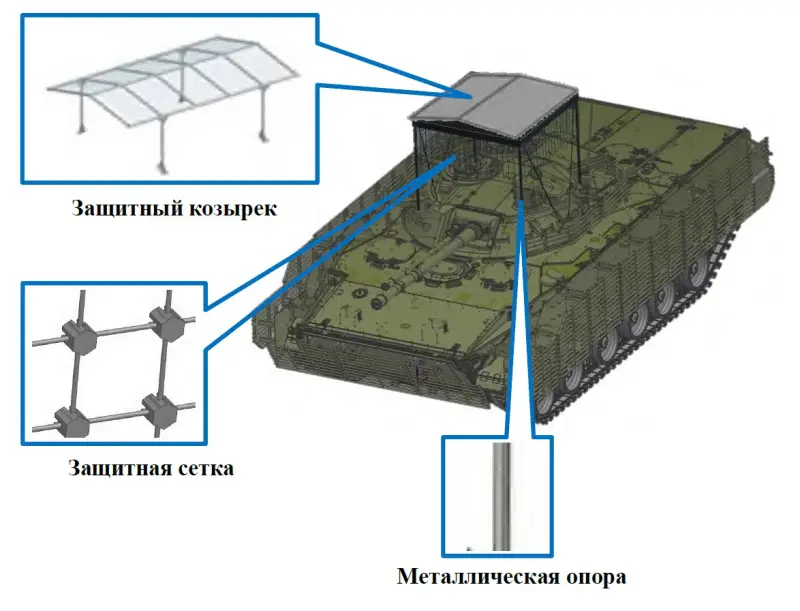
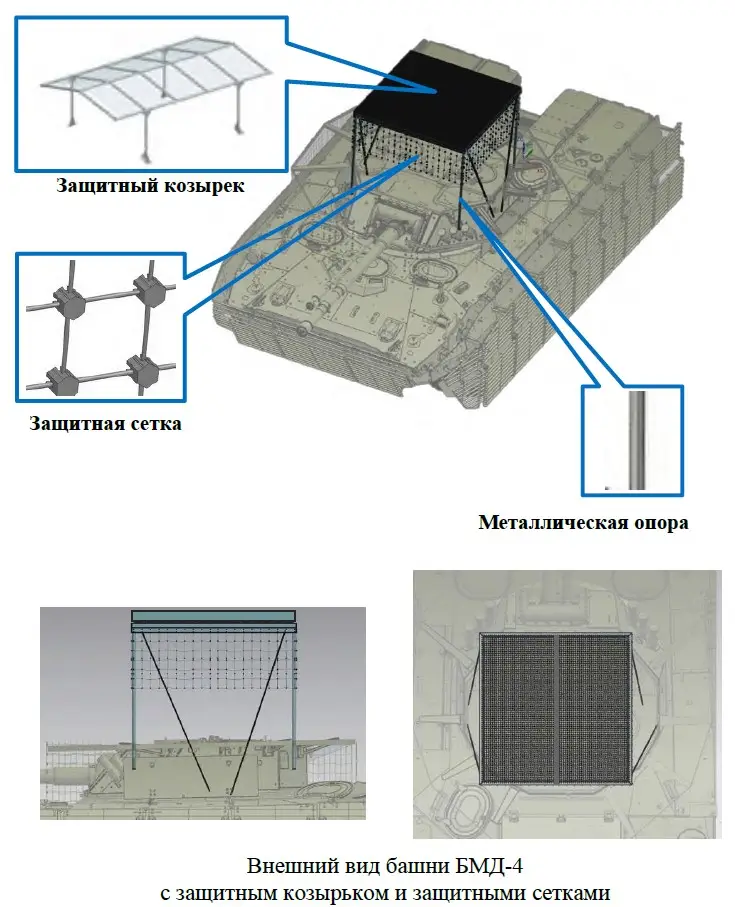
Source: Guidelines for ensuring the protection of infantry fighting vehicles and BMD-4 from FPV drones (main provisions), Moscow, GABTU, 2023.
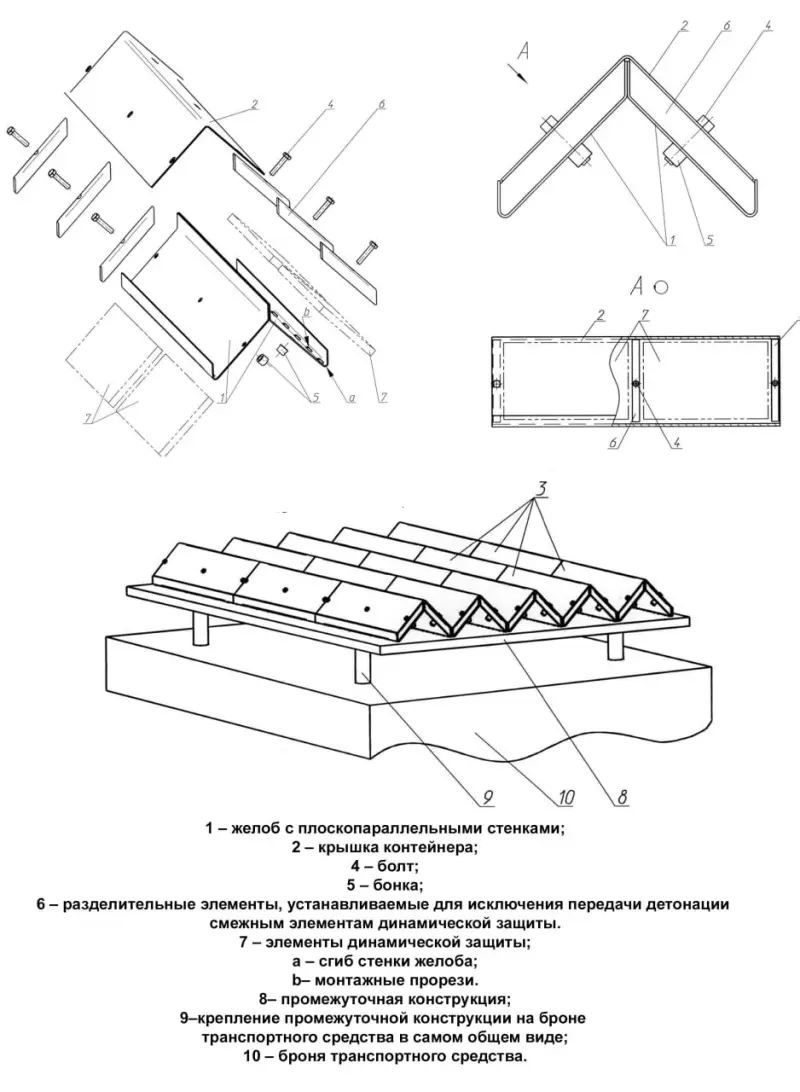
Patent images of anti-drone protection using remote sensing units
A simple comparison of the protection techniques of armored personnel carriers and infantry fighting vehicles raises questions.
Why, from the most vulnerable upper projection, are infantry fighting vehicles and infantry fighting vehicles protected from drones by a completely symbolic grille with a narrow mesh skirt?
The engine and transmission, airborne and partially fighting compartments remained under attack. At the same time, the BTR-82A, whose ammunition is much less dangerous and vulnerable, is generously covered with a visor from nose to tail.
There should be a special conversation about the BMP-3. This is a vehicle with a 100-mm gun, albeit of low ballistics, but quite suitable for destroying neo-Nazi fortifications. Coupled with high mobility, the BMP-3 becomes an analogue of a tank. Of course, taking into account the specifics of use.
In this regard, the question arises: why aren’t dynamic protection units mounted on steel supports on such a valuable combat unit? We are talking about structures covering the tower from above, mounted on 780 mm supports. It is unclear why BMP-3s are not equipped with these.
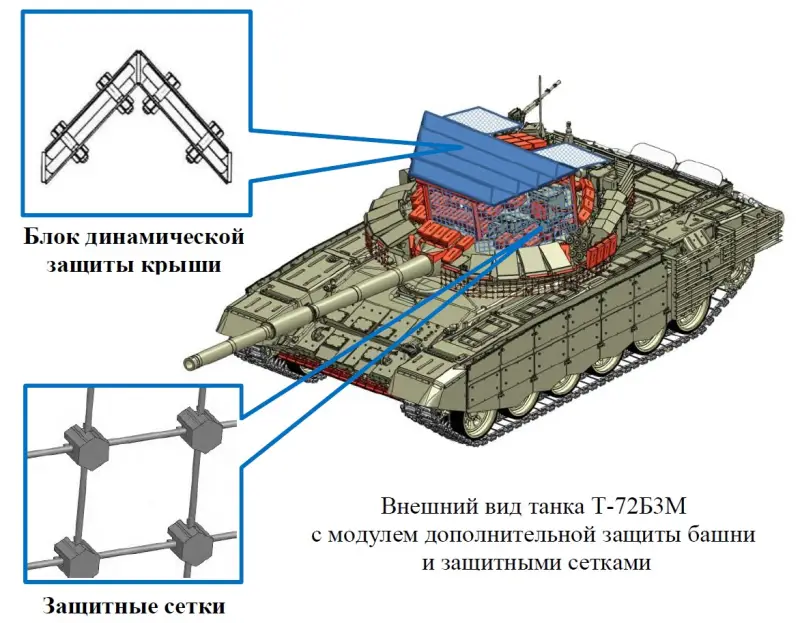
Source: Guidelines for ensuring the protection of tanks from FPV drones (main provisions), Moscow, GABTU, 2023.
As a result, a not entirely blissful picture emerges.
GABTU voices recommendations for retrofitting military equipment with protection not for military-industrial complex enterprises, but for combat repair units. It is proposed to install canopies and nets on the front or near it. Factories, with a few exceptions, send armored vehicles to the front, protected from drones by purely symbolic means.
Why Nizhny Tagil, Arzamas, Miass, Naberezhnye Chelny or Kurgan did not bother to equip their equipment with truly up-to-date means of protection against drones remains a mystery.
Information